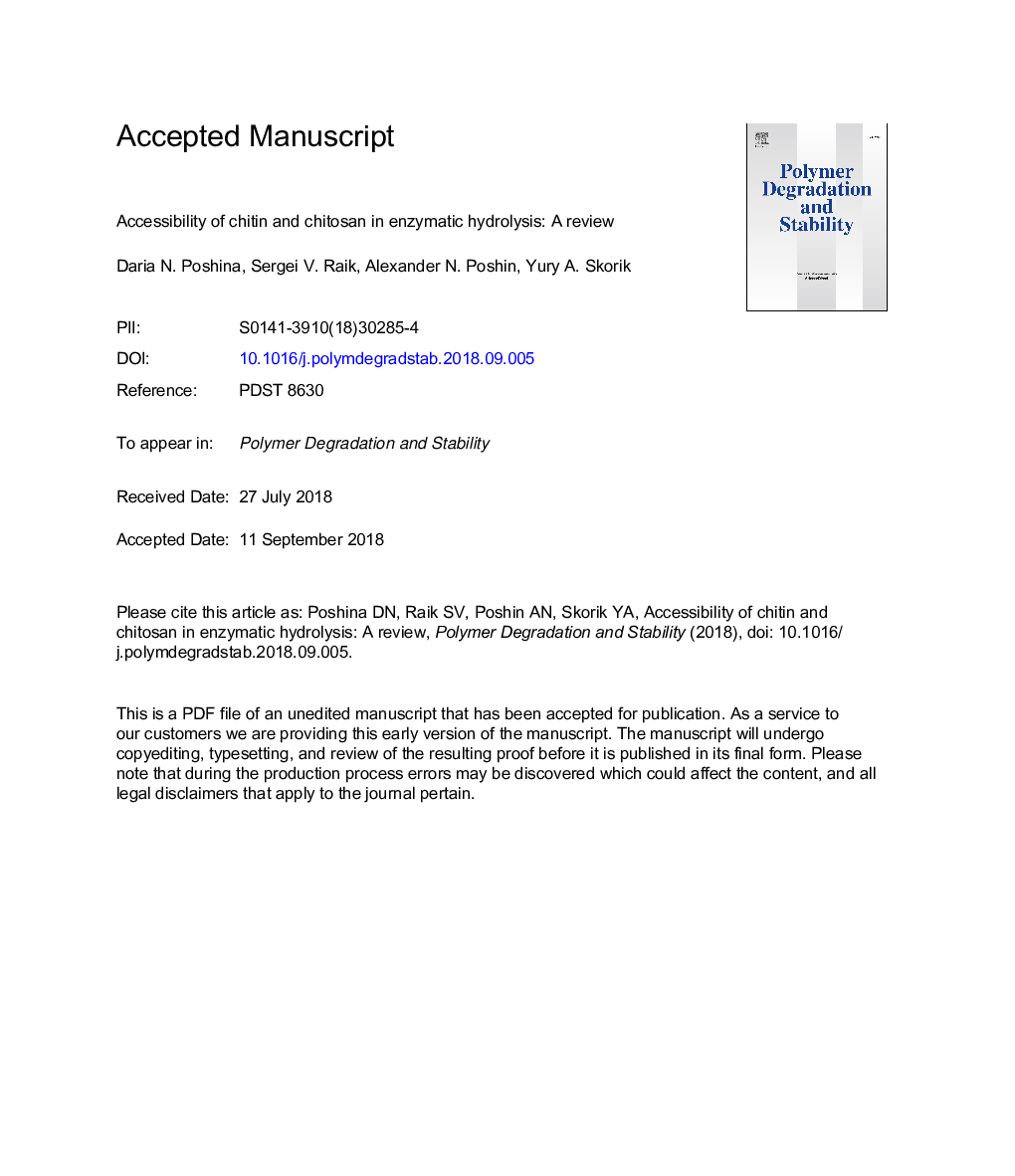| Article ID | Journal | Published Year | Pages | File Type |
|---|---|---|---|---|
| 11006421 | Polymer Degradation and Stability | 2018 | 37 Pages |
Abstract
The enzymatic modification of polysaccharides has attracted much research attention, as it raises the possibility of using highly selective reactions performed by naturally designed proteins for practical purposes. However, achieving high performance of enzymes for the degradation of insoluble natural polysaccharides with highly ordered structures, such as cellulose and chitin, remains challenging. In the case of chitopolysaccharides, their chemical structure is amenable to hydrolysis by many hydrolases specific to different glucans or even by proteases or lipases. Some of these enzymes are even more active than chitinases and chitosanases in the hydrolysis of soluble chitosan, thereby opening up many opportunities for wide-scale and cost-effective enzymolysis of chitopolysaccharides. When compared with enzymatic treatment data for chitosan, data for chitin is limited, largely because of the poor accessibility of this polymer to enzymes. Most studies on enzymatic hydrolysis of polysaccharides have focused on cellulose, which is a recalcitrant substrate, and have confirmed the importance of cellulose-binding modules in facilitating enzyme action against this insoluble substrate. This review summarizes recent data concerning the mechanism of action of specific and nonspecific enzymes in the hydrolysis of chitin and chitosan and regarding the application of a large number of different enzymes in chitooligosaccharide production, as well as information about the disruption of the polysaccharide crystalline structure by accessory proteins. Possible reasons for the extraordinary enzymatic digestibility of chitin and chitosan are discussed.
Related Topics
Physical Sciences and Engineering
Chemistry
Organic Chemistry
Authors
Daria N. Poshina, Sergei V. Raik, Alexander N. Poshin, Yury A. Skorik,
